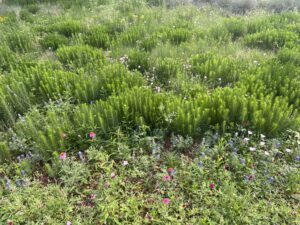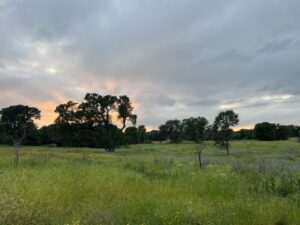
Austin, Texas is nestled between two distinct prairie ecosystems, the Edwards Plateau and the Blackland Prairie. This unique ecological intersection also happens to lie along a critical migratory route for monarch butterflies, a supportive lifeline for their 3,000 mile journey.
As a Seattle-based landscape designer, I was invited to create a residential pollinator herb garden in the heart of Austin. While designing remotely presented a few challenges, it also taught me that with the right tools, research, and collaboration you can develop a vibrant, place-based planting design no matter where you’re located.
Here’s what I learned from this project:
1. Start with a Thoughtful Site Analysis
Before designing, each project should always start with a site analysis. Some questions to get you started:
● What’s the soil composition?
● How does water move or collect on site?
● What’s the sun exposure and shadow pattern?
● Are there any steep slopes or level changes?
● What existing vegetation should be removed or preserved?
Because I was remote, I used a combination of Google Earth, Shadowmap, local geology resources, and insights from the Lady Bird Johnson Wildflower Center as well as detailed feedback from the client. These helped me identify the site’s constraints and opportunities and make informed planting decisions.
2. Use Regional Resources to Guide Plant Selection
Local guides and native plant databases were essential in building a resilient, pollinator-friendly palette.
For Austin, I leaned on:
● Lady Bird Johnson Wildflower Center
● AustinTexas.gov Native & Adapted Plant Guide
● Texas Parks & Wildlife Plant Lists
(PNW readers: Some great resources include the OSU Plant Database, Great Plant Picks, and Squak Mountain Nursery.)
3. Design for Bloom Succession
One of the most impactful strategies for supporting pollinators is staggering bloom times. By including at least 2–3 plants in bloom per season, you ensure continuous nectar and habitat support for bees, butterflies, and other beneficial insects.
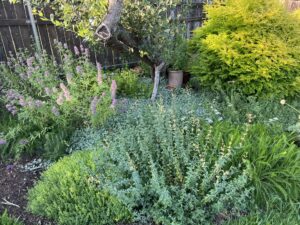
In this Austin garden, I incorporated:
● Milkweed for monarch nesting and feeding
● Herbs like oregano, dill, fennel, and parsley for both culinary use and their ecological value
● A mix of natives and adapted perennials to maintain seasonal bloom and texture
4. Herbs Are Underrated Pollinator Plants
What I loved most about this project was integrating herbs in a way that was both functional and delightful. Plants like chives, oregano, and parsley not only feed pollinators but also add seasonal color and scent. I was reminded that one-third of all crop production and 75-90% of perennials depends on animal pollinators.
5. The benefits of Adding Ground Covers
● Suppress weeds
● Retain soil moisture
● Prevent erosion
● Offer habitat and food for insects
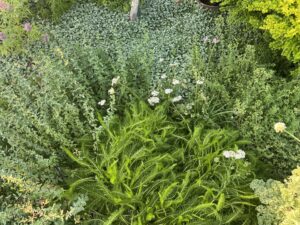
My two favorite ground covers in this design:
● Achillea millefolium (Common Yarrow) – a tough, pollinator-loved native
● Dichondra argentea (Silver Ponyfoot) – a beautiful silvery trailing plant perfect for hot climates
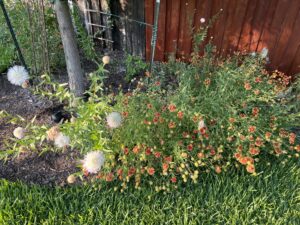
Use native seed mixes:
I also recommended incorporating a native seed mix, which is not only cost-effective but also increases biodiversity and creates a soft, evolving texture.
Bonus: Check in with local conservation programs for free pollinator seeds!
6. Healthy Soil = Healthy Plants
The client’s site had areas of poor soil structure, so we focused on adding organic matter like compost to improve fertility, water retention, and microbial life. This step made a noticeable difference in the success of newly transplanted perennials and herbs.
Final Thoughts
This project reminded me that gardens can be both beautiful and ecologically rich. Even from hundreds of miles away, I was able to bring together regional knowledge, client collaboration, and naturalistic design to create a space that supports life and brings joy.
Designing with native plants and pollinators in mind isn’t just good for the environment, it’s deeply rewarding as a designer. Whether you’re in Austin or elsewhere, start by observing, researching, and planting with intention.
